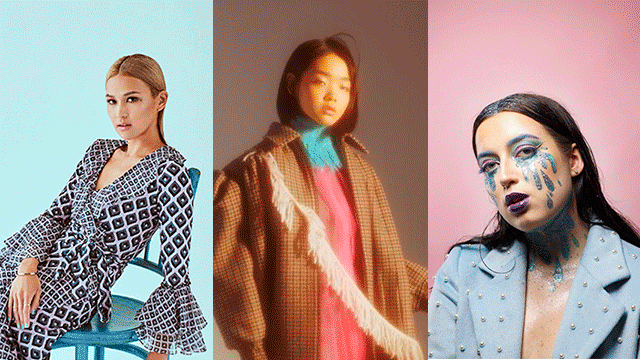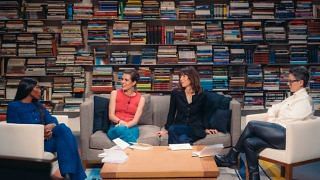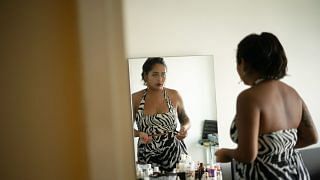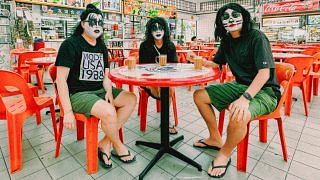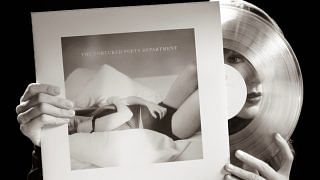Photography Phyllicia Wang Styling Imran Jalal Hair & Make Up Manisa Tan, Using Kose and Keune
Amanda Lee Koe has been making waves with her stylish debut novel Delayed Rays of A Star, which imaginatively tracks and expands on the lives of screen legends Marlene Dietrich, Anna May Wong and Leni Riefenstahl. As anyone who has read her works would likely attest, Koe’s characters tend to stray outside orthodox societal constructs, a trait that the colourful author shares and isn’t afraid to speak out on. Hardcore punk she is not, says the 31-year-old New York-based Singaporean, but she did go through a riot grrrl phase in her teens and is “aligned with the importance of individual freedom and radical female agency”. (Oh, and she loves Joan Jett and Patti Smith.) So when she was recently back in Singapore to promote her book, Keng Yang Shuen caught up with her to talk about her riot grrrl roots and how the punk-influenced subculture still resonates with her.
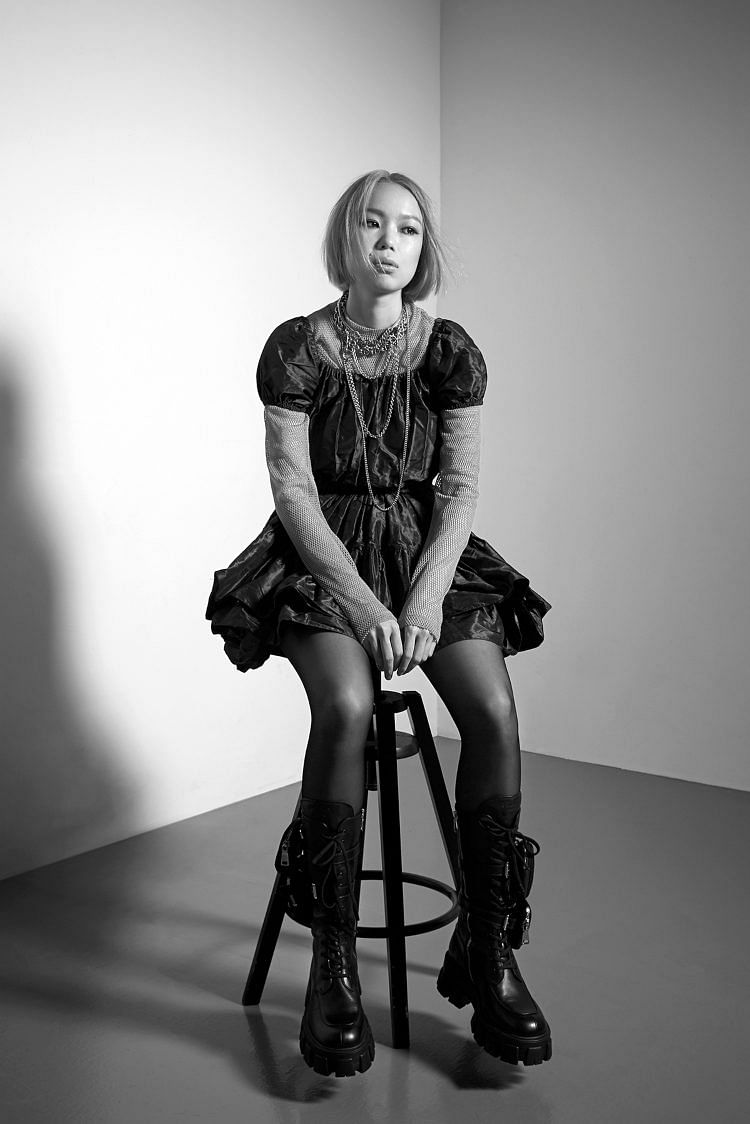
How did you first discover riot grrrl culture?
“I was quite an oddball teenager. I didn’t really like any of the things that my friends liked. At 15, I was super into vintage and cabaret culture because of Marlene Dietrich – my queer and cinematic icon. Then when I was around 18, my best friend and I made each other mix CDs, and she introduced me to Bikini Kill. We had no other friends who were into the music that we were into – they were into Jay Chou and The Pussycat Dolls, and we would be talking about Sleater-Kinney and Janis Joplin. One also needs to factor in how hard music was to discover back then. To make our mix CDs, we had to trawl through Limewire for hours and attempt illegal downloads.”
What did the culture represent for you then?
“Riot grrrl culture was about taking it back. You didn’t have to wait for the revolution to dismantle the patriarchy. You could and should do so in your own tiny ways, here and now… Between my best friend and I, riot grrrl culture was a kernel of self-discovery. I didn’t even truly know what punk or feminism was then. As a teenager growing up in Singapore, you’d learn the Mole concept or study Shakespeare, but no one would assign Judith Butler reading, for example. So stuff like music was a gateway drug; an early entry point. That was also my Tumblr and DIY phase—I once cut three holes in a pillow case and wore it to school.”
How has riot grrrl culture evolved today?
“Riot grrrl culture and its ethos will always be relevant. At its core is a message about finding your own strategies of taking power back into your own hands. However fashion and the media have had a historical tendency to defang and commoditise subcultures while making them more visible and accessible. I’m thinking Vivienne Westwood and the punks, Nike women ads and the girlgaze aesthetic. Is there a way to spread messages of feminist agency into the mainstream so that we aren’t always preaching to the converted in our own small silos, yet do so without making the message lose its authentic truth and subversive power?”
Who would you consider today’s riot grrrls?
“To my mind, riot grrrls aren’t necessarily card-carrying third-wave feminist punk musicians with a certain sound and aesthetic. I’d like to think of today’s riot grrrls simply as girls or gender nonconforming individuals who call truth to power and take destiny into their own hands. They are allergic to the patriarchy and have a strong personal calling. They have a social consciousness beyond themselves, which sometimes manifests in their own work or in the spaces that they carve out for others. They are unafraid to go against the grain, and are unswerving about how they choose to live. In this sense, a riot grrrl could be anyone from Agnes Varda to Greta Thunberg.”
Are there any riot grrrls here in Singapore?
“For me, Singapore’s riot grrrls are women like the pioneering generation of transwomen sex workers who used to walk Bugis Street. Pioneering feminist performance artist Amanda Heng. Drag queens like Becca D’Bus. Academics like Teo You Yenn, a sociologist who published This Is What Inequality Looks Like, an on systemic poverty in Singapore. Filmmakers like Kirsten Tan and Sandi Tan whose idiosyncratic works, Pop Aye and Shirkers respectively, have won them major awards at the Sundance Film Festival. Women who make space for other women like Corinna Lim, who left the legal practice to become the executive director of (gender equality advocacy group) AWARE. There’s also Emmeline Yong, who left investment banking to set up Objectifs, the visual arts centre for film and photography that has nurtured many young artists since the early ’00s, and continues to thrive under her codirection with Yuni Hadi, the director of the Singapore International Film Festival. Diana Rahim, who edits Beyond the Hijab, an online publication and community for Muslim women in Singapore which provides a nonjudgmental, female-centric space where they can share their stories. June Chua and her late sister Alicia, who set up Singapore’s first transgender shelter, The T Project.”

Would it be fair to call you antiestablishment?
“Personal freedom, individual agency and unbigoted fairness are all of paramount
importance to me, so if some form of majoritarian authority challenges my claim to freedom, agency and fairness, it only makes sense for me to stand up to it, no? In which case, I don’t think it is necessarily fair to say that I’m antiestablishment. It might be more accurate to say that the establishment is being anti-progress.”
What sparked this streak in you?
“It’s no accident that writers, artists and thinkers are always the first to go when a political regime is doing a purge of those they deem a threat to social cohesion. Although I don’t deliberately seek to
present an anti-establishment point of view, I do think that every artist who makes meaningful work – not just beautiful, but meaningful – does so from left-field of the system, and not from inside of it. It’s not something we choose for ourselves, but more of an inevitability.
Ever since I was a child, I’ve found the idea of an unquestioning allegiance to authority unbearable, so I don’t think anything in particular sparked this off for me. It was an impulse that was always inside. I like asking a lot of questions and I need to agree for myself if something is right for me – I’m not one to bend to a greater will because I’ve been told what’s good for me.
I don’t think someone like Patti Smith, for example, first set out with an intention to be political. She just wanted to write poems and songs about the things that she cared about. Earlier this year, I got to see her playing live in New York, and when she was singing People Have The Power – ‘The power to dream to rule / To wrestle the world from fools’ – the political aspect just felt like a natural extension of her person. It was wonderful to see her being the same now, at 72, just as she was in her 20s.”
Do you feel more liberated as a creative abroad?
“No matter what you do, or where you are, it is so crucial to find your own way of retaining your individual spirit and human agency. It could be in a big way or a small way – everything adds up in the end. On my part, all I can do is write, so I have always expressed myself as clearly and freely as possible in my work, whether I was living in Singapore or in New York. I wrote Ministry of Moral Panic in my early 20s – before I ever lived outside of Singapore – and I never hesitated at any point or felt that I had to curtail myself. Being force-fed and staying silent is not my jam so in a way, it doesn’t matter where I physically am. I can never understand why people say stuff like “you’ll get used to it” like it’s a good thing. No! We have only one life, there is no dress rehearsal.
Yes, there’s a certain carte blanche that comes from moving to a new city, where you don’t know anyone and aren’t beholden to anything, but leaving isn’t necessarily akin to liberation. Liberation has to come from inner strength under pressure from hostile environments, and I would say that I have always found ways to be free because I chose to walk off the cliff right from the start.
I did whatever I felt like doing, even if it got me into trouble. I didn’t care what people said or thought, and I always found ways to get around it.
As a creative, one constant trade-off – no matter what city I’m in – is instability, but I get to control my own time and decide what to use my brain for, which is vital to me. What I essentially mean to say is, even in an unyielding place, a person can be liberated if they are willing to go to certain lengths for their freedom. There is always a choice to go against the grain. Yes, there’s a risk of eventually having to pay a price – be it social, financial or political – but I’d rather die free than live in mental shackles.”





